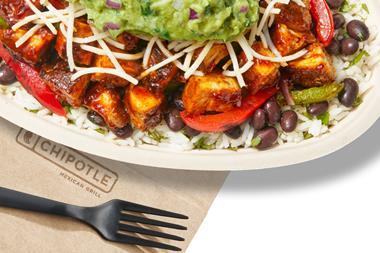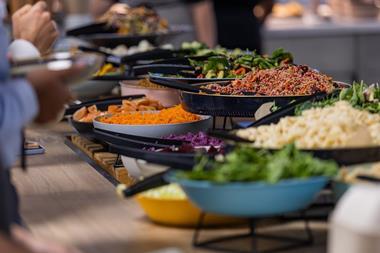Developing dishes that appeal to all four generational groups could reap rewards for your business. Technomic’s Darren Tristano explains why increasing variety on menus is key to broadening your offer.
It is crucial for foodservice operators to know their consumers – their preferences, behaviour and values. All of these can vary across different generations. With the coming-of-age of Millennials, many op-erators focus on their needs. Technomic’s 2016 Generational Consumer Trend Report helps to provide a closer look at all four major generations in the US, providing insight into how restaurants can appeal to different consumers and introduce menu items that entice more than just members of one generation.
Generation Z
Members of Generation Z or Gen Z, are those aged 23 and younger, which total about 15% of the population in the US. Its preferences are split due to differences in age and lifestyle; as a result, foodservice providers’ tactics for targeting the two sections within Gen Z will vary. Older Gen Z relies heavily on foodservice – a habit they picked up from their parents. As younger Gen Z – aged 13 to 17 – gains independence and spending power, they will use foodservice more often. Because of their age, these consumers are less likely to be adventurous with their menu and restaurant choices.
Overall, this generation places the highest priority on customisation – especially the ability to change portion size. About half of Gen Z ranked customisation as third in a list of menu attributes that drive traffic to restaurants, both limited and full service.
Gen Z is also most likely to be influenced by healthier menu options. Fresh and additive-free menu items encourage purchase among members of this generation. Freshness enhances taste and health perceptions, and terms that convey real foods, such as clean and natural, resonate more than those that denote the lack of one additive.
Customisation and fresh, better-for-you fare are staples at many fast-casual chains, leading them to be popular among younger generations. Gen Z is particularly drawn to pizza and burger concepts because they are most likely to order these fast-food favourites. Fast-casual pizza and burger players that offer customisable, better-for-you options will be especially appealing to Gen Z. Expect to see Gen Z frequent concepts such as Punch Neapolitan Pizza, which offers create-your-own personal pizzas in classic and white varieties, and Smashburger, known for create-your-own burgers with premium toppings like goats’ cheese and freshly sliced avocado.
Millennial
Millennials, the second largest by population, were born between 1977 and 1992.Research shows that almost half of all Millennial women are parents. Those of this generation that have children align more with Gen X in that they’re searching for restaurants that appeal to children as well as to their own health priorities.
Millennials are most likely to say a kid-friendly ambiance and kids’ menu are important to them when visiting a
limited-service restaurant. Millennials are also just as likely as Gen Xers (23% for each) to say that their children decide which restaurant to visit.
To target young parents, chains should promote what is most important to them – unprocessed and natural foods along with diverse and sophisticated kids’ menu options, not unlike those they would expect to eat. In the last half of 2015, many chains, including Applebee’s and IHOP, removed soda as an option or as the default option on their kids’ menus, instead offering healthier drinks like milk and juice.
Other examples of chains appealing to Millennial parents include Chick-fil-A and emerging fast-casual chain MAD Greens.
Recent Millennial parent-oriented rollouts at Chick-fil-A include a valet service – in which parents order and pay at the drive-through and eat food with young kids at a reserved table inside – as well as a line-up of Honest Kids juices. Salad-focused chain MAD Greens introduced, in April, a Kids Super Box filled with slow-roasted chicken, apples, cheddar cheese, tomatoes, croutons and ranch dipping sauce, and a Kids Awesome Box filled with grilled citrus chicken, pasta, edamame, apples, carrots and ranch dipping sauce.
Generation X
The smallest of the four generations, Generation X or Gen X, encompasses a span of just 10 years. Members of Gen X are between the ages of 40 and 50 and possess the highest median household income, along with Baby Boomers. An important sub-segment of Gen X is the women: female Gen Xers’ monthly patronage at most locations rivals that of Millennials, making this demographic a key group for many restaurants.
Gen X demands taste, quality and variety more so at full-service restaurants (FSRs) than limited-service restaurants (LSRs). This relates to segment dynamics, as FSRs have larger menus and higher price points. Conversely, combo meals are particularly appealing at LSRs, due to their added value and convenience. The Big Box Combo Meal, returned recently to the menu at Church’s Chicken, would appeal to this generation with its choice of either two mixed pieces of fried chicken or three Honey-Butter Biscuit Tender Strips plus two small sides and a biscuit for just $5 (£3.80).
Gen X is increasingly likely to order beef dishes and fried chicken, while carb-heavy foods like pizza, sandwiches and pasta are down slightly from 2014. Women are more likely to eat salad and other chicken dishes, while men prefer burgers. One chain that attracts both men and women is The Habit Burger Grill, which debuted the Strawberry Balsamic Chicken Salad this month, featuring grilled chicken breast on greens with strawberries, dried blueberries and feta in home-made strawberry-balsamic vinaigrette. Adding salads to the menu at a burger-heavy chain like The Habit Burger Grill can help reduce the veto vote from a generation that values variety.
Baby Boomer
This generation has the most spending power; therefore, restaurants cannot overlook Baby Boomers, who comprise about one third of the adult population in the US.
This generation is the least ethnically diverse, so its interest is high in ethnic cuisines widely available when growing up, such as German fare. Chains with a tight focus on German foods like Wurstkuche, Rosamunde Sausage Grill and Hofbrauhaus will appeal to Baby Boomers as well as limited-time menu options at other chains. Honouring Oktoberfest is a popular way to introduce limited-time offers (LTOs) with a German focus.
Beyond traditional ethnic cuisines, Boomers are most interested in Mediterranean, as it is lighter and highlights seafood and salads – Boomers’ preferred foods. Chains that have debuted Boomer-friendly Mediterranean options include Fish City Grill, which added a Mediterranean Salmon dish featuring char-grilled Chilean salmon, home-made tzatziki sauce and quinoa tabbouleh, and Meatheads Burgers and Fries, which launched two LTOs that are on the lighter side. The Mediterranean Chicken Sandwich has grilled chicken breast basted with lemon, oregano and olive oil on a potato bun with yoghurt tzatziki, feta crumbles, cucumber, tomato and red onion; and the Feta Fries are seasoned with lemon, olive oil and fresh oregano and topped with feta cheese crumbles.
While they do seek lighter fare, Boomers still enjoy meat-heavy options like burgers, barbecue and beef. In fact, Boomers’ top options consist of protein-centric dishes, more so than other generations. Since 2014, more Boomers say they would now order barbecue, beef dishes, breakfast food and salad. This could be due to a boom in innovative comfort foods and salads as well as breakfast options available all day.
Firebirds Wood Fired Grill added seasonal items for Boomers looking for protein-rich comfort food or lighter, more healthful fare. The Southern Biscuit Burger is a beef patty topped with ham, Tillamook cheddar and chipotle gravy on a biscuit with choice of side, and the Watermelon, Heirloom Tomato & Fresh Mozzarella Salad is tossed with basil and honey-peppercorn vinaigrette.
Key takeaway
It’s impossible for restaurants to appeal to every customer on every visit; however, understanding generational differences can help to inform LTOs and occasional menu additions, which can broaden appeal and reduce veto votes among generationally diverse groups.
■ Darren Tristano is president at Technomic Inc, a Chicago-based foodservice consultancy and research firm.



































